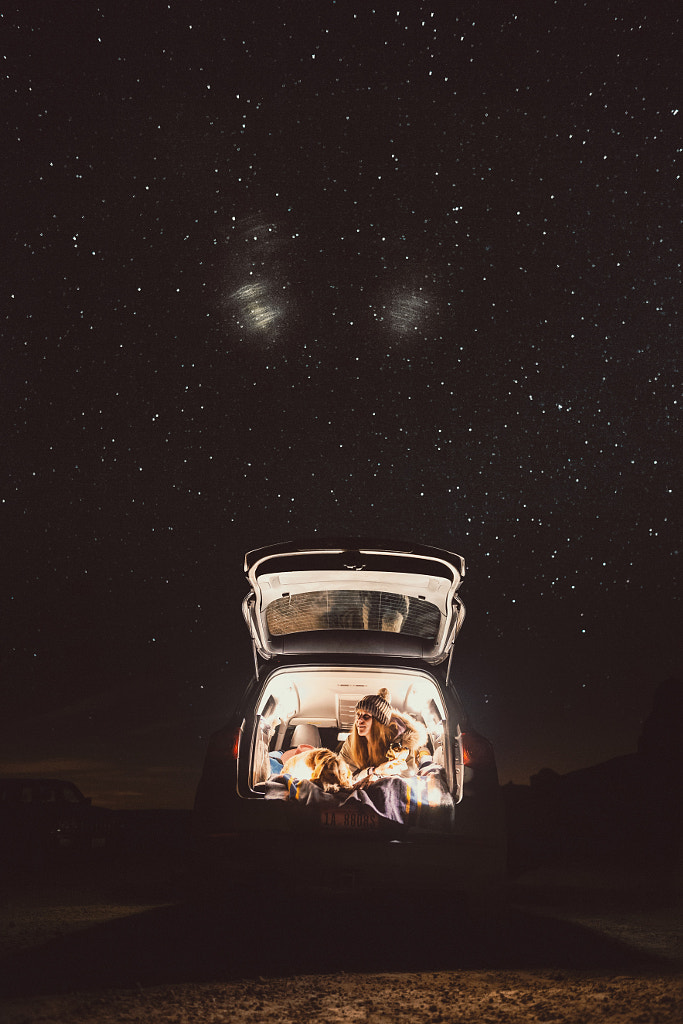In 2020, IKEA joined forces with Vox Creative and Escape, an RV and tiny home builder, to build a mobile tiny home in hopes of promoting awareness around sustainable and affordable living. Complete with solar panels, kitchen surfaces made of repurposed plastics, and sustainably grown pine paneling, the house clocks in at just 187 square feet, and it comes pre-built. For those working remotely, the kitchen table can be collapsed to form a desk.
Over the past few years, amid unprecedented changes and challenges worldwide, individuals and families have pivoted to more sustainable, affordable, and fulfilling ways of life. And brands like IKEA have met consumers where they are, creating products that help us make informed choices for ourselves and the environment.
With the tiny house movement and others like it entering the mainstream, commercial photographers have an opportunity to tap into this cultural moment by representing the true diversity of career paths, lifestyles, and accommodations available to the global public in 2022. Here are just a few ideas to consider for your Licensing portfolio.
Spotlight on: Tiny houses
According to Airbnb, bookings for unique homes grew this summer, with tiny houses and treehouses growing by 173% and 116%, respectively. The tiny house movement has inspired television shows on Netflix, HGTV, Discovery+, and more, with DIY tiny homes appearing in the pages of magazines like Architectural Digest.
Built on a “less is more” ethos, tiny houses can be outfitted with solar panels or run on wind power, making them an attractive option for people hoping to live off-grid (more on that below). Some are mobile, and many offer more privacy than a more traditional home.
In 2020, at the height of the pandemic, one survey found that more than half of US respondents said they would consider living in a tiny house, with 86% of those who hadn’t yet become homeowners saying they would consider a tiny house as their first. Reasons for considering a tiny house included affordability, efficiency, and environmental friendliness.
This year, a separate survey, this time from Home Advisor, revealed that 86% of respondents said they’d live in a tiny home, with 31% saying they’d buy one. Of those who would buy one, 68% would consider a tiny house as their first home. Gen Zers were the most likely to say they’d live in a tiny house, with millennials coming in second.
Spotlight on: Life off-grid
“Going off-grid” simply means living in a self-sufficient home, cutting out the need to pay a utilities company. Earlier this year, Ivan Penn of The New York Times covered the movement in California, where people are leaving the grid in the aftermath of blackouts, high electricity bills, and severe weather events caused by climate change. As he explained, solar panels are far more affordable than they once were; someday, experts predict, millions of us might be able to transition to life off-grid.
Now, there’s no “one way” to live off-grid. Some might choose to grow their own food, while others shop at grocery stores. While one person might choose a rustic cabin, another might opt for modernist luxury. Many were inspired by the pandemic, which caused people to move from major city centers and sparked the massive “cottagecore” trend.
But these lifestyles are far more than trends; they’re fundamental shifts in how we interact with the planet. The “rewilding” movement, for instance, has taken hold among city-dwellers burned out by the grind of daily life, inspiring a transition to a simpler and more eco-conscious way of life. When creating advertising content for your portfolio, consider the people in your community; what does reconnecting with the land mean to them? What small changes have they made? Maybe they’ve transitioned to solar panels, or perhaps they’ve joined a community garden.
Spotlight on: Volunteer opportunities
The pandemic months saw a surge in volunteering and community outreach, with people stepping in to help their neighbors by providing food, pet care, and childcare. Giving back remains vital, so consider a cause that’s important to you, whether it’s a reforestation project in Bali or a sea turtle conservation initiative in Costa Rica.
Maybe you volunteer to walk dogs at a local shelter to prepare them for adoption, or perhaps you work as a builder on a housing project or do home repairs. Shadowing a volunteer during a beach cleanup or tree planting project—or volunteering yourself—can be a great way to support a cause while creating meaningful connections and images. If you’re working with a non-profit organization, consider donating your photography skills to support what they do.
As with any of the ideas on this list, if you want to license any of these photos for commercial use, you need signed model releases for any recognizable people and property releases for any recognizable private properties, including houses and places of business. Check in advance to see if this is a possibility.
Spotlight on: Digital nomadism
As part of their annual trend report, The Future 100, Wunderman Thompson Intelligence named “the nomad economy” as one of the movements to watch for. The pandemic sparked a global shift in how we think about work, allowing more people to work remotely, sometimes while living abroad for extended periods.
While the phrase “digital nomad” might once have conjured images of young singles on the move, the reality is far more diverse: this summer, for example, The BBC covered the rise of digital nomad families, who spend months traveling together. Research from Lonely Planet and Fiverr reveals that 54% of survey respondents consider themselves “anywhere workers,” which Lonely Planet defines as “post-pandemic digital nomads.” 45% are married, while 70% are parents who bring their children along when they travel.
While digital nomadism in the past might have been associated with a large carbon footprint, Lonely Planet clarifies that today’s remote workers have modified their approach. Instead of jetting off to a new location every couple of weeks, they’re sticking to places for longer periods of time. 55% of respondents, dubbed the “slomads,” like to work in one spot and move after three months or more.
Spotlight on: Retreats
“Although they are not long-term, retreats are a popular way for people to find balance and reconnect with themselves and nature,” the 500px team explains. From luxury retreats specializing in CBD treatments to remote camping experiences in the rainforest, today’s retreats are anything but basic. Wunderman Thompson Intelligence named “mycological retreats” as one of their top travel trends for the year, citing interest in guided psychedelic journeys, along with “long recovery spas,” referring to spas that offer treatments for long COVID.
When brainstorming, consider your passions, whether you’re interested in yoga, meditation, or other wellness movements. Consider, too, the sustainability credentials of your location; choose retreats that support the environment and local community, and look close to home to avoid unnecessary transportation. You can find eco-retreats worldwide, from the Maldives to Mexico.
When creating images for Licensing, avoid any potential intellectual property issues, including logos or branded design elements. If you’re documenting the #VanLife movement, for example—a subculture within digital nomadism—be sure to steer clear of any license plates, logos, or identifying brand features. Focus instead on the storytelling, whether you’re capturing a scenic outlook while living off-grid or documenting a volunteer planting a tree.
Looking for more tips for Licensing Contributors? Check out our article How to incorporate sustainability in your commercial portfolio.
Not on 500px yet? Click here to learn about Licensing with 500px.















Leave a reply